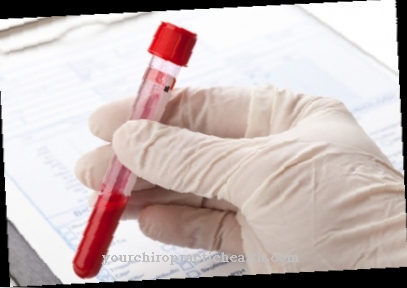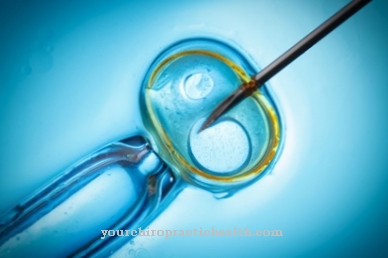The Cardiotocography - better known as CTG - is now a standard examination during pregnancy. Cardiotocography is usually performed from about the 30th week of pregnancy, and is used routinely during childbirth.
What is cardiotocography?

The Cardiotocography (CTG) is used in order to be able to monitor the labor of the mother and especially the heartbeat of the child before, but especially during, child and mother.
The heart of an unborn child normally beats about 110 to 160 times a minute. There are certain factors that briefly affect the rhythm and frequency of the heartbeat. A cardiotocography is therefore always a snapshot, because sleep and movement influence the heart activity of the unborn. Fluctuations in cardiotocography are normal, also and especially during childbirth, because labor also affects the child's heart.
This means that fluctuations do not mean that the unborn child's health is in danger. The cardiotocography usually takes about 30 minutes. During this time, good measurements can usually be made; in the event of anomalies, the measurement times are often extended to 60 minutes. The doctor or midwife can use the CTG curves to determine whether the child is adequately supplied with oxygen.
If there are any abnormalities, further examinations are usually carried out so that the state of health of the child can be checked. In so-called high-risk pregnancies, cardiotocography is often performed before the 30th week of pregnancy.
Function, effect & goals
In the Cardiotocography the heart rate of the unborn child and the labor of the mother are recorded at the same time.
The mother-to-be should lie on her side or sit in a chair provided for this purpose during the examination. In cardiotocography, a belt with two measuring sensors is placed around the pregnant woman's stomach. To some women it may seem like the waist belt is too tight. However, this is necessary to prevent the sensors from slipping. The sensors are located under the waist belt and are connected to the CTG device.
One sensor records the child's heart rate, the other sensor records the tension in the abdominal wall (possible contractions). A special variant of cardiotocography is the so-called kineto-cardiotocography (K-CTG). In addition to the heartbeat of the child and the contractions of the pregnant woman, the child's movements are also recorded. This allows the doctor to determine at an early stage how the child is being supplied with oxygen.
The main purpose of cardiotocography is to confirm the normal condition of an unborn child. Nevertheless, the CTG is not sufficient for this, but from the 30th week of pregnancy it can provide initial clues about the health of the baby. If no abnormalities are observed in the CTG curves, it can be assumed that the child is receiving sufficient oxygen.
The doctor also determines the speed of the child's heartbeat, and if there is a lack of oxygen, the heart rate drops. The main purpose of a cardiotocopraphy is to protect the unborn child from consequential damage due to a prolonged oxygen deficit.
As a rule, the use of cardiotocography depends on the course of pregnancy. Although the maternity protection guidelines do not require a CTG, it is routinely performed by most doctors from the 30th week of pregnancy. The implementation then usually takes place every 14 days. If the pregnancy is at risk, cardiotocography is usually performed from the 25th week of pregnancy.
This is the case, for example, with multiple pregnancies, gestational diabetes or premature labor. The CTG is generally one of the standard examinations during childbirth. Cardiotocography during childbirth is primarily used to monitor the child's oxygen supply so that any necessary action can be taken in good time (e.g. brief interruption of childbirth if the child's heart rate falls).
Risks & side effects
It is controversial whether the unborn child will die Cardiotocography actually noticed, but so far there is no clear evidence of negative effects on the child and mother.
However, many mothers notice that their unborn baby often behaves differently than usual during a CTG. There are children who get restless during the cardiotocography and want to turn away, while others become very calm. If you are unsure, expectant mothers should contact a midwife or gynecologist.
As with an ultrasound examination, the CTG is based on ultrasound waves. However, these are not converted into a picture, but rather into curves, which then show the heartbeat of the child. A CTG is therefore no more harmful than an ultrasound examination with imaging.



























